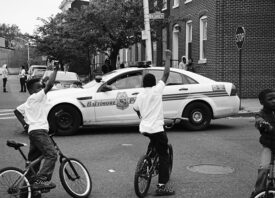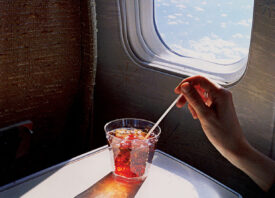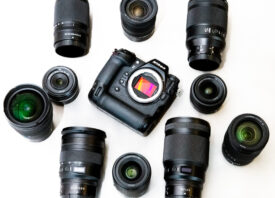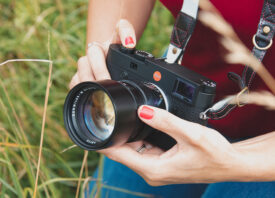Search this site
Rethinking Photography Through Nature and Sustainability

As the technological advancements such as generative imagery for instance continues to
dominate the current artistic landscape, some photographers and artists try to redefine the
boundaries of the medium through new and alternative practices. For Oriana Confente, it is
through a focus on ecology and sustainability that she finds her strength as an artist. With a
deep understanding and commitment to fight against environmental issues and to explore
sustainability, as well as a respect for the natural world, Oriana challenges traditional
photographic and artistic norms by collaborating and experimenting with plant life, using them as the primary focus of her work.
Rooted in what is called “alternative phytography”, she explores historical and analog processes showing an hands-on and experimental approach to image-making and art. By combining this with a critical awareness of the ethical and ecological implications of her work, the artist opens the door to new innovative ways of image-making. In projects such as “Exercises in Seeing as a Leaf”, she highlights the interconnectedness that we as humans have with nature, inviting her audience to consider the stories that plants and nature can tell.
In this conversation, we talk about the origins of her artistic practice, her exploration, and
her relationship with photography, as well as her quest to create a “sustainable darkroom”. Sharing important insight for those interested in exploring alternative photography, she discusses the evolving potential of the practice and offers a new vision for art. One that nurtures the collaborative relationship that we as artists have with the natural world.

Do you mind introducing the concept of alternative photography to those who might
not know what it is?
‘Alternative photography is a broad term used to describe many non-commercial photographic processes. The exact definition is up for debate, but it usually refers to analog or historical practices. Think of hands-on, unconventional, and experimental methods or materials. Cyanotypes are a popular example.’

Can you talk to us about your creative process, how you started exploring this and
what exactly prompted it?
‘Photography has always been an important creative channel for me, but as my practice became more about ecological interventions, shooting film felt incompatible with the rest of my work. The history of photography is deeply intertwined with global, (neo)colonial systems of extraction and contamination. I started to wonder how else I could participate in the medium that wasn’t as harmful.
‘I learned about developing my own black and white film with caffenol, a homemade mix of
instant coffee, vitamin C, and washing soda. The organic compound that triggers the chemical reaction – phenolic acid – is found in plenty of plant matter, not just instant coffee. That year, my aunt grew an abundance of lemongrass in her garden (like, a lot) and she gave me the surplus. I brewed up an herbal developer with the lemongrass, tried developing a roll of Ilford HP5 with it, and it worked. I’ve been playing with botanical methods of processing and printing ever since.’
Do you mind talking in more detail about your project “Exercises in seeing as a leaf”?
‘Exercises in seeing as a leaf” applies a process called phytography to make impressions of
changing landscapes alongside other-than-human collaborators.
‘Phytography uses the internal chemistry of plants to mark photosensitive surfaces. Stems, branches, flowers, and leaves are foraged within a close radius, soaked in a mixture of household ingredients, pressed onto 35mm film strips, exposed to sunshine, and fixed as negatives.
‘The series came from a desire to explore the other-than-human sensations that can become legible to us through imagery. Plants experience climate change and biodiversity loss, too, although at a vegetal speed. I wanted to initiate site-specific investigations that value the perspectives and contributions of these plants in the image-making process.’

In what ways is alternative photography more sustainable than the traditional
darkroom film photography method?
‘It isn’t automatically more sustainable. The umbrella of alternative photography includes
historical methods that involve heavy metals and toxic chemicals (for example, daguerreotypes). They aren’t all great for the planet or its people.
‘Achieving a sustainable darkroom is an ongoing process. On a practical level, choosing herbal developers or fixing negatives with salt instead of a professional rapid fixer replaces some of the industrial chemicals with low-toxicity, biodegradable substitutes. The plants involved can be composted and returned to the earth without polluting it.
‘Sustainability also goes beyond the image. In Camera Geologica (a great read on the material history of photography), Siobhan Angus writes that many environmentally activist photographs can “aestheticize or anesthetize” issues rather than generate real empathy or action. I try to avoid this through non-extractive care; giving space for other-than-human collaborators to interact on their own terms (even if the result isn’t the composition or contrast I wanted) and building relationships with places and things beyond the context of our work.
‘It’s important to note that although my approach is ecologically-informed, my methods aren’t perfectly sustainable. Phytography needs the chemical reaction on a photographic emulsion to produce an image, which means it still needs the silver salts that coat strips of film, and also means it’s still complicit in the extraction of natural resources and labour that affects people around the world disproportionately. Most forms of analog photography–conventional or alternative–also demand a lot of water usage. I’ve used greywater to cut down on fresh water consumption but it’s challenging to keep enough around unless your lab is built to recycle its own supply. However, I do believe that every effort counts. Waiting for a perfect, all-encompassing solution is paralyzing. As Donna Haraway said, “Nothing is connected to everything; everything is connected to something.”
‘I can always do more, but in the meantime, it’s my responsibility to work within the networks I have access to for now, and act in the capacity that I can for now. That’s why I usually refer to my practice as working towards a sustainable darkroom rather than claiming that I use sustainable darkroom methods, which is an important distinction to me.’

What kind of advice would you give somebody interested in exploring this kind of
alternative photography?
‘There’s a huge community online and offline that shares so many valuable resources – connect with others! Join conversations, find inspiration, get weird. Also, alternative processes, especially more sustainable approaches, take time. Be prepared to go slowly. And most importantly, don’t be afraid to get messy or make mistakes.’
What kind of other experimentations outside of phytograms are you currently
interested in exploring in your work?
‘I’m constantly pursuing deeper co-creation with the land and pushing to make my practice more eco-friendly. Some of the least energy-intensive forms of alternative photography don’t produce fixed images, such as anthotypes, which only need sunlight and a coat of extracted plant pigments to print, therefore fading over time. I’m trying to be less afraid of making art that mutates or disappears.
‘Towards that goal, I’ve been expanding the types of botanical processors I use and the surfaces my images can be transferred onto. I’m experimenting with making my own paper using the boiled plant matter from my herbal developers that would have been composted otherwise. The goal is to co-create a series of landscapes that are made from, with, and can eventually return to, different environments.’

Where do you see alternative photography of this kind evolving in the future?
‘I’m always astounded by what others are doing so I expect to be surprised. I’ve been following Finnish artist, Johanna Rotko, who grows her own prints from yeast on agar-lined petri dishes. I also recently attended a conference organized by the Women Alternative Photography Group (WAPG) and Folk House Darkroom (Bristol, UK). One of the presenters, Riya Panwar, transfers Polaroid emulsion lifts onto fresh fruits and then allows them to decay – letting mould take control of how the image-object evolves. My hope is that we continue to explore photographic methods that are less extractive and more caring, decentering human perspectives and emphasizing collaboration with the natural world.’
What would you like for people to take away from your work?
‘I hope to expand our perception of how photography can be done and who (or what) can be
involved in the process. Art allows us to rehearse possibilities. Another future is possible if we work together.’



